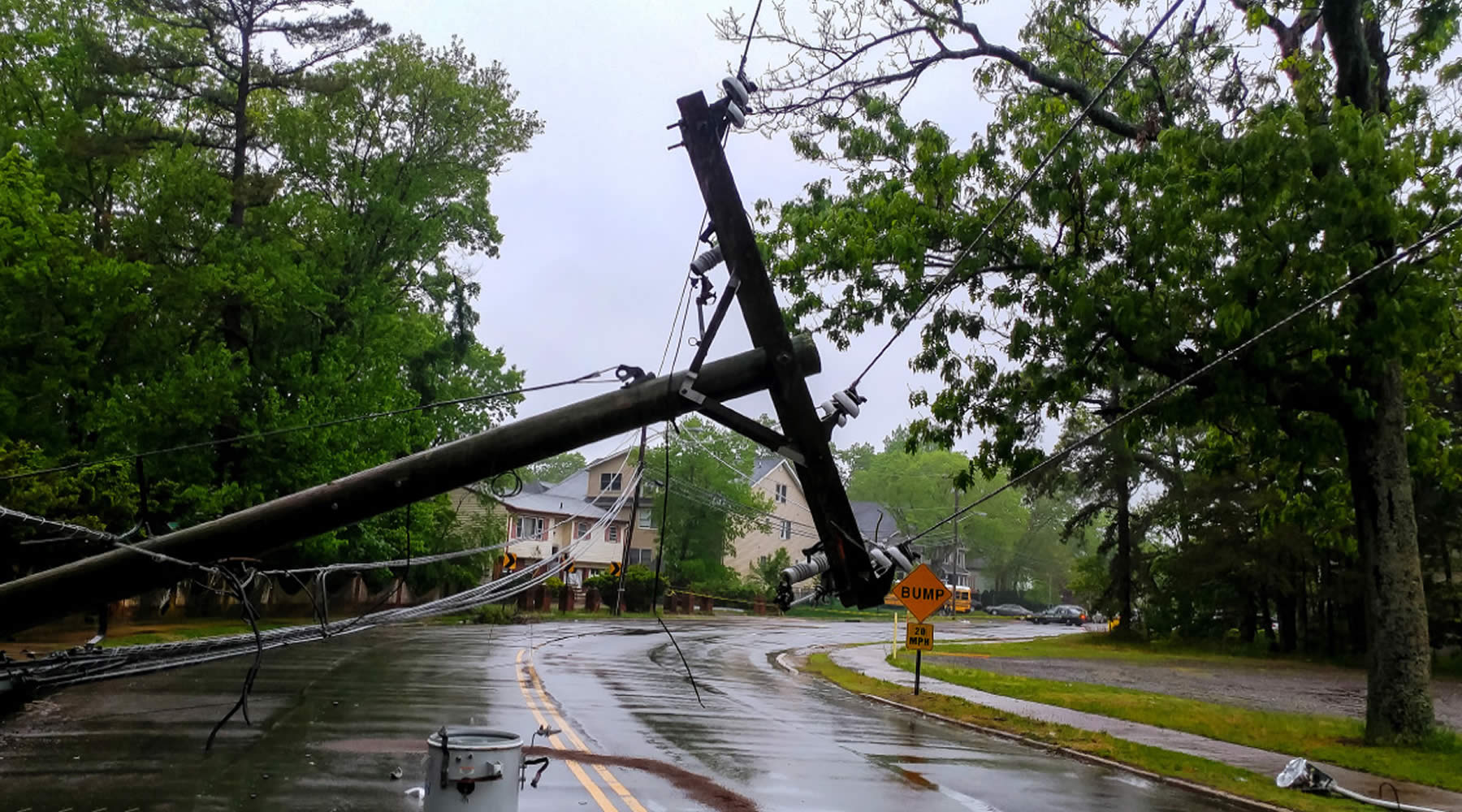Over the past few decades, extreme weather events are happening more frequently, lasting longer, and becoming more severe. Cleaning up after extreme weather costs the economy billions every year, impacting lives and livelihoods within communities throughout the United States.
In 2020, 22 separate billion-dollar weather and climate-disaster events struck the United States, breaking the previous record of 16 events in 2017 and 2011, a 30% increase.

Weather monitoring service Climate Central reported that since 2000, major electrical power outages directly resulting from weather-related events have increased 67 percent. Setting more records, 2018 marked the eighth consecutive year with eight or more billion-dollar disasters, exceeding the long-term average of 6.2 per year.
Here are just a few of the notable billion dollar events of this decade:
- 2012 Hurricane Sandy – $74.8 billion
- 2018 Hurricane Michael – 25.7 billion
- 2020 Hurricane Laura – 19 billion
- 2020 Tropical Storm Isaias – $4.7 billion
- 2020 West Coast Firestorms – $16.5 billion
Extreme weather is not slowing down. Data models created by MIT forecast a future with more hurricanes in general by 2035, with 11 percent of these storms reaching Category 3, 4, and 5 class strength.
For businesses and communities throughout the country, planning for extreme weather events is becoming imperative.
How businesses and communities can “weather the storm”
For businesses, the issue of weather-related outage planning, and associated cost prevention, should be top of mind. Leaders should not wait until they’ve suffered losses due to an outage before implementing a resiliency solution. It’s challenging and costly to implement a new solution while recovering from loss.
The cost to organizations when the power goes out can be staggering. According to the 2020 State of Commercial and Industrial Power Reliability Report:
- Nearly a quarter of businesses in the United States lost power at least monthly in 2020
- 1 out of 3 companies that lost power monthly estimated each outage cost $2 million or more
- 79% of companies who experienced weekly outages estimated each outage cost $50,000 or more
These outages can be costly in other ways too beyond lost production or sales. Outages are causing customer dissatisfaction, harming your brand and reputation, disrupting your supply-chain, causing data losses, delays to service, and more – it’s easy to see how the costs can quickly grow beyond control.
For communities, leaders should ensure safe, powered spaces are available throughout prolonged outages where cell phones and vehicles can be charged, heating / cooling is available, and food supplies remain unspoiled. Some communities have chosen to implement microgrids, an always-on power source, to keep grocery stores, gas stations, libraries, and community centers powered throughout outages. Businesses are increasingly taking a similar approach.
A day without power can have a meaningful impact on any business’s bottom line
As weather-related costs continue to rise, organizations of all sizes need to consider exactly what is at risk and understand the steps they can take to minimize the future impacts on their operations.
The microgrid solution is rising to the top to address these challenges. Although the solution isn’t necessarily new, the great demand for what it brings to the table is – local energy resilience.
Bloom is a trusted partner in providing microgrid solutions, ensuring businesses have uninterrupted 24/7 power. Our unique on-site power generation systems produce power where it’s consumed, so our customers avoid the threat of power disruptions while benefiting from clean and affordable electricity. Our AlwaysON Microgrids have protected customers from over 1,700 grid events since 2018 alone.
Stay tuned for our next blog in the series where we’ll dive into greater depth about how power outages impact businesses of many kinds.



